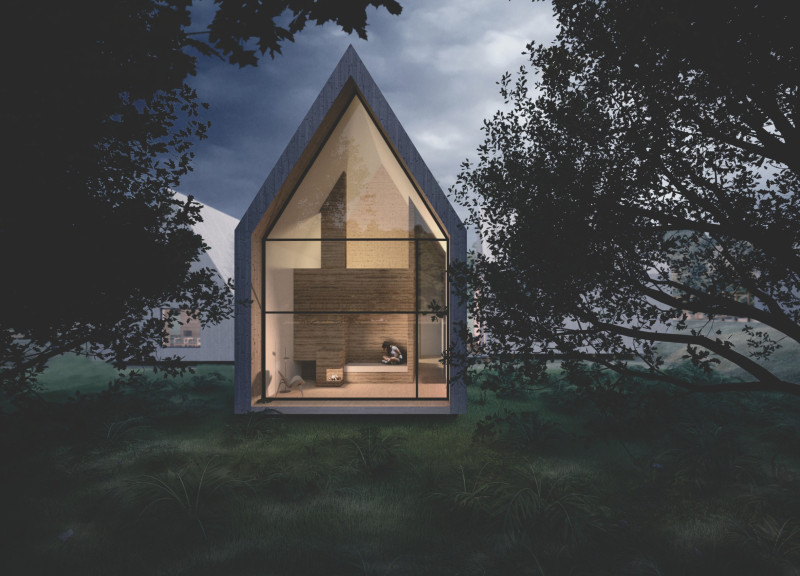5 key facts about this project
The Blue Clay Country Spa is set in the quiet landscape of Latvia, designed to support ecotourism principles. The retreat combines spaces for community interaction with areas dedicated to individual relaxation. The concept emphasizes a balance between connecting people with nature and providing a place for personal well-being, making it a suitable environment for both guests and locals.
Spatial Organization
- The design features two main clusters: one includes the main house, guest accommodations, and staff areas, while the second cluster focuses on therapy and spa treatments using blue clay. This layout takes advantage of the site's natural environment while clearly defining where communal and private spaces are located.
Central Courtyard
- At the center of the design is a courtyard, where a prominent tree stands as a gathering point. This area includes an exterior oven, a garden, and playground elements, creating a welcoming space for social activities. The courtyard encourages interactions among guests and local residents, reflecting the goal of strengthening community ties.
Pathways and Accessibility
- Thoughtfully designed pathways connect the two clusters, guiding visitors over the natural landscape to a pier by the pond. This layout improves access between different areas and deals with challenges posed by the swampy ground. By elevating the paths, the design reduces impact on the environment, allowing for a respectful relationship with the surrounding nature.
Architectural Language and Materiality
- The project's design draws inspiration from traditional rural architecture, characterized by pitched volumes that orient strategically for light and views. The materials mentioned include wood and adobe, chosen for their low environmental impact and cultural significance. Using these materials supports sustainability while honoring local craftsmanship.
The spa areas prioritize privacy and calm, encouraging visitors to engage in wellness experiences that connect them to the local culture. Each element is carefully considered to enhance the relationship between people and the natural environment, illustrating a thoughtful approach to design.


























